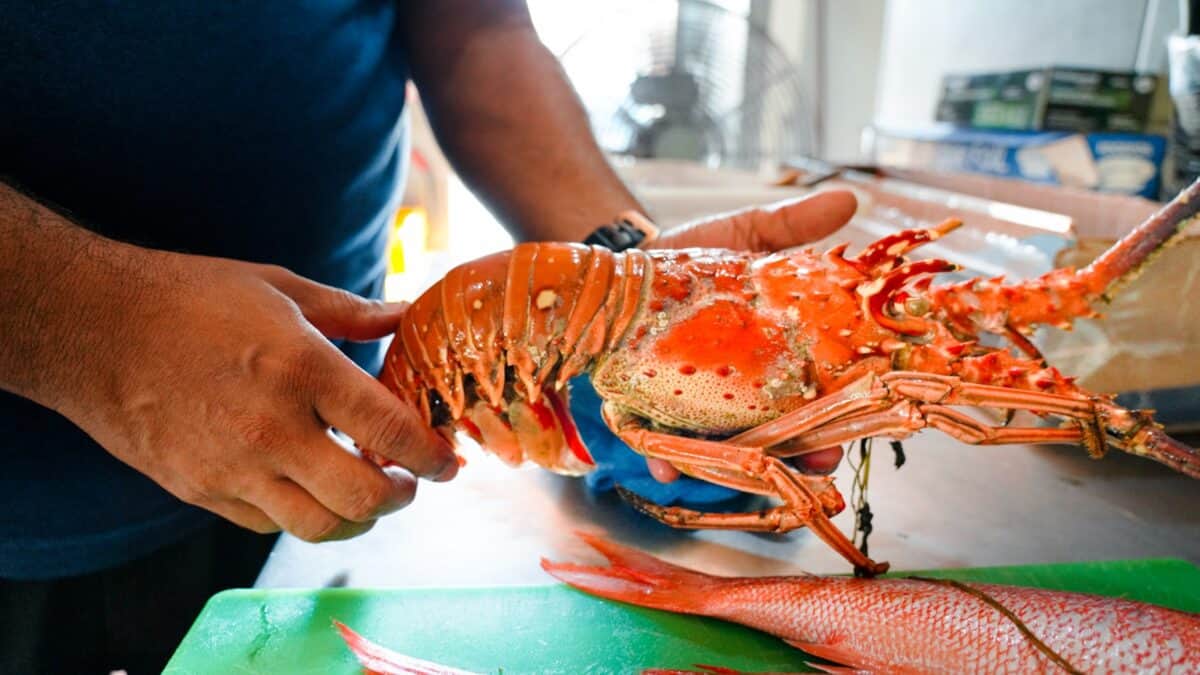One of the most fascinating culinary transformations occurs when a dull, blue-green lobster changes to a bright, vibrant red during cooking. This remarkable color metamorphosis has intrigued chefs, diners, and scientists alike for centuries. The dramatic shift from the lobster’s natural bluish or brownish shell to the iconic red hue we associate with seafood feasts is not just visually striking but represents a fascinating intersection of biology, chemistry, and physics. Whether you’ve witnessed this change firsthand while preparing a special meal or simply observed it in restaurants or cooking shows, understanding the science behind this transformation adds another layer of appreciation to this delicacy. Let’s dive into the colorful world of lobster science to uncover why these crustaceans make such a dramatic costume change only after they meet heat.
The Natural Color of Live Lobsters
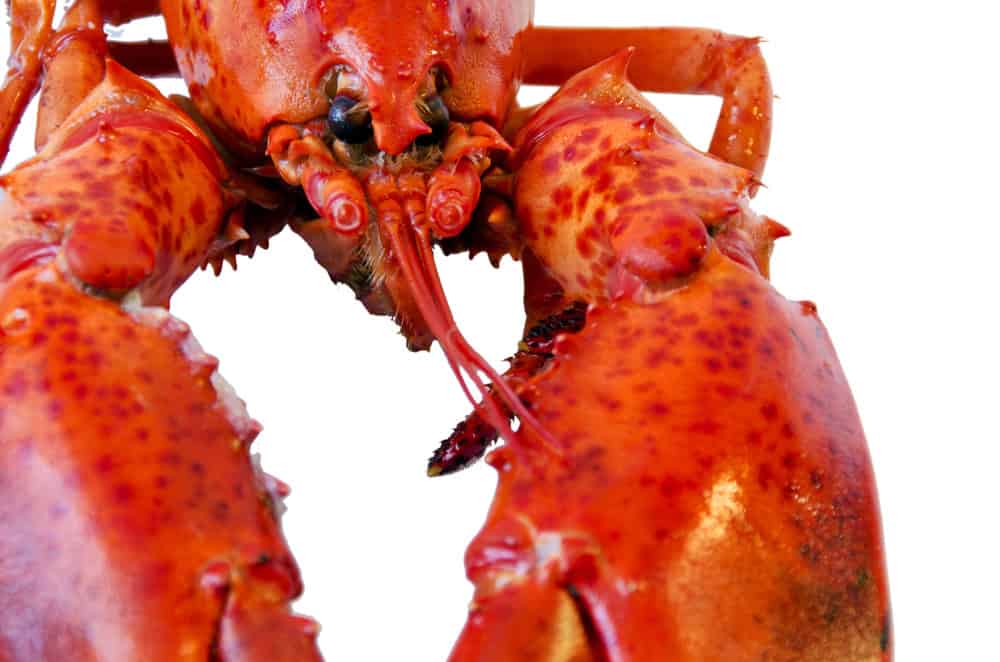
Live lobsters display a range of colors that often surprise people expecting the bright red version familiar from restaurants. In their natural state, most lobsters exhibit a mottled dark blue-green to brown coloration. This combination of colors serves as excellent camouflage in their ocean floor habitat, helping them blend with rocks, seaweed, and shadows. The American lobster (Homarus americanus), commonly found in North Atlantic waters, typically has this blue-green shell with brown mottling. Different species can show slight variations, and even within the same species, colors can range from blue-black to yellow-green and occasionally even vibrant blue. These natural pigmentations help lobsters survive in the wild by making them less visible to predators, a crucial adaptation for these bottom-dwelling creatures that lack the speed to escape many marine hunters.
The Rare Blue Lobster Phenomenon
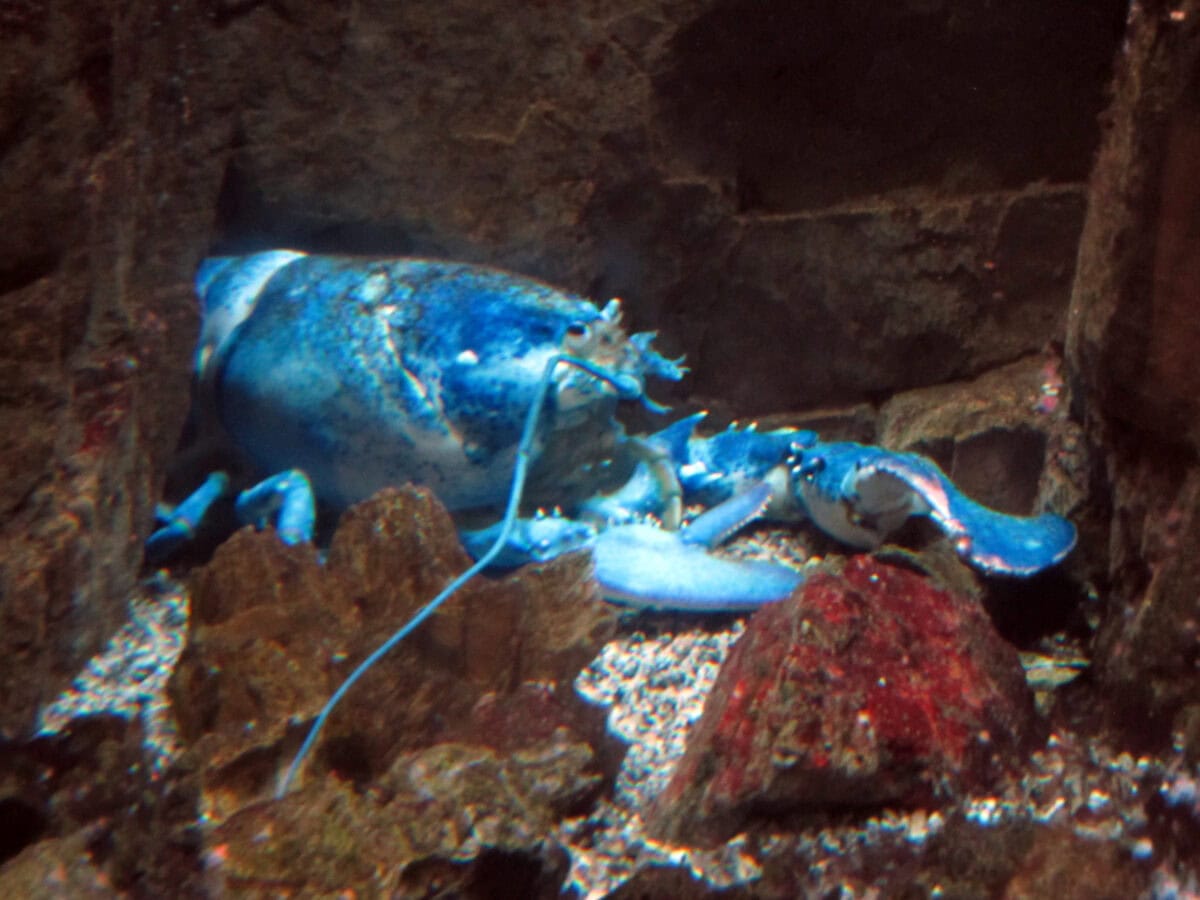
While most lobsters display the standard blue-green to brown coloration, extraordinarily rare color mutations do occur in nature. The most famous of these is the bright blue lobster, which occurs in approximately one in two million lobsters. This striking azure coloration results from a genetic mutation that causes an overproduction of a particular protein. Even rarer are yellow lobsters (approximately one in 30 million), calico lobsters with mottled orange and black shells (one in 30 million), and the extremely rare albino or “crystal” lobsters that lack any pigmentation whatsoever (estimated at one in 100 million). These color anomalies, while visually stunning, often make these lobsters more vulnerable in the wild as they stand out against their natural environment. Interestingly, even these uniquely colored lobsters will turn the same bright red when cooked, confirming that the cooking transformation affects all lobsters regardless of their original coloration.
The Chemistry of Lobster Shell Pigmentation

The science behind lobster coloration involves a complex mixture of pigments called carotenoproteins. The predominant pigment in lobster shells is astaxanthin, which belongs to the carotenoid family—the same group of compounds that give carrots their orange color. However, in live lobsters, this naturally red pigment doesn’t appear red at all. That’s because astaxanthin molecules are bound to proteins in a complex molecular structure. When bound in this protein-pigment complex, the light-reflecting properties change, causing the shell to appear blue-green rather than red. This binding essentially masks the natural red color of astaxanthin. The protein complex creates a three-dimensional structure that interacts with light in a way that shifts the visible color toward the blue-green spectrum, effectively hiding the red pigment that will later be revealed during cooking.
The Science Behind the Red Transformation

The dramatic color change from blue-green to bright red during cooking comes down to protein denaturation—the same process that turns a clear egg white into an opaque white solid when heated. When lobsters are subjected to heat, the proteins that bind to the astaxanthin pigment begin to unravel and change their structure. As the temperature rises above approximately 140°F (60°C), these proteins denature, losing their three-dimensional configuration. When this happens, the protein-pigment bonds break, liberating the astaxanthin molecules from their protein cages. Once freed from these protein bonds, astaxanthin reveals its true red color. This process is irreversible, which explains why cooked lobsters never revert to their original color. The transformation is a perfect example of how heat can trigger significant chemical changes in food beyond just cooking the meat.
Why Heat Makes the Difference
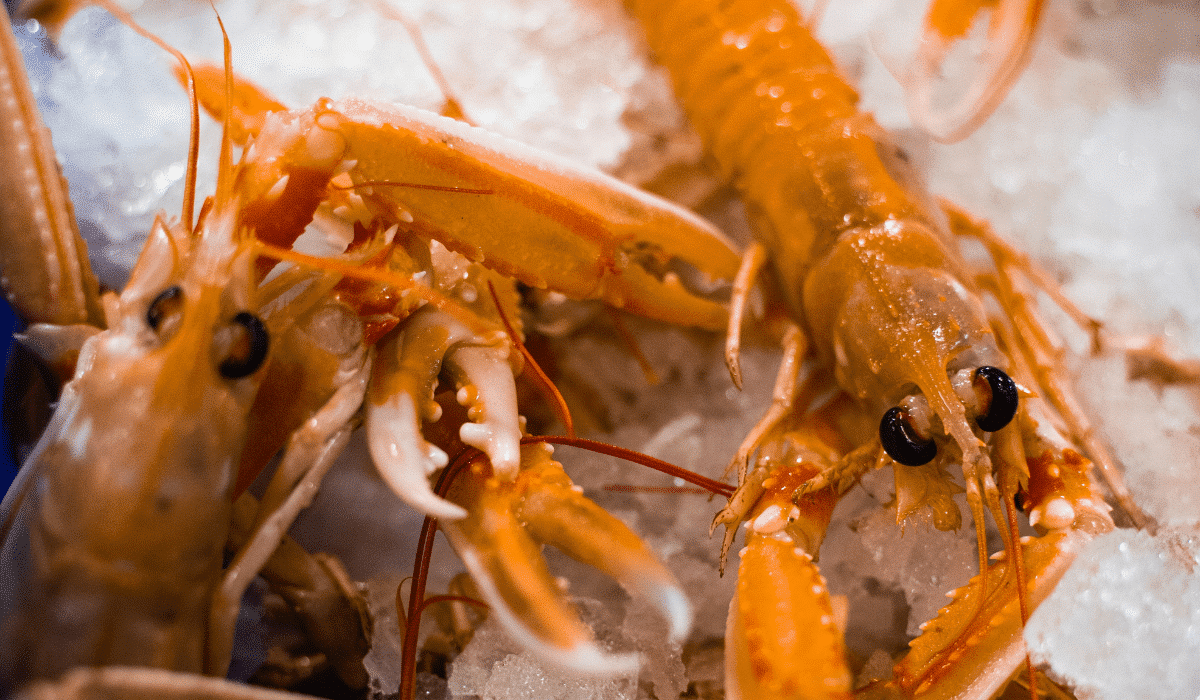
Heat acts as the crucial catalyst in the lobster’s color transformation by providing sufficient energy to break chemical bonds. The protein-pigment complexes in lobster shells are relatively stable at normal temperatures, maintaining their blue-green appearance. However, when exposed to heat, the thermal energy causes molecules to vibrate more intensely. This increased molecular motion eventually overcomes the intermolecular forces holding the protein in its natural folded state. Once enough heat is applied—whether through boiling, steaming, baking, or grilling—the proteins denature in a rapid chain reaction. This process occurs throughout the shell relatively quickly and uniformly, which is why the color change happens all over the lobster’s body at roughly the same time. The speed of this transformation depends on the cooking method and temperature; higher heat causes a faster color change, though the final result is the same vibrant red regardless of the cooking technique.
The Role of Astaxanthin in Nature
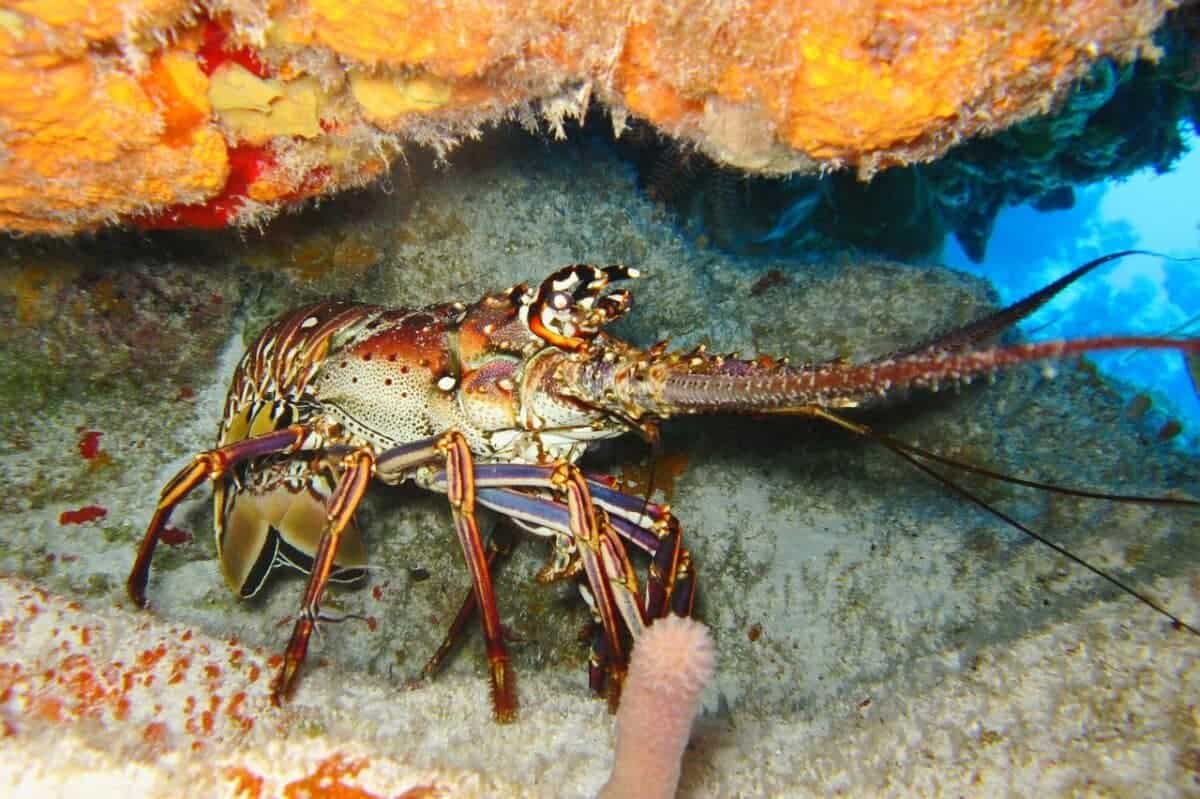
Astaxanthin, the star molecule in our lobster color story, plays important roles beyond just creating beautiful colors in seafood. In nature, astaxanthin is a powerful antioxidant that helps protect marine organisms from stress, UV radiation, and free radical damage. Lobsters cannot produce astaxanthin themselves; they must obtain it through their diet, primarily by consuming algae and smaller crustaceans that have accumulated the compound. Once ingested, lobsters incorporate astaxanthin into their shells during the molting process when they form new exoskeletons. This pigment also contributes to the pink coloration in salmon, shrimp, and flamingos—all animals that obtain astaxanthin through their diet. The compound’s antioxidant properties are so beneficial that astaxanthin has become popular in human dietary supplements, marketed for its potential anti-inflammatory and anti-aging effects, though research on these benefits in humans is still evolving.
Other Seafood That Changes Color When Cooked
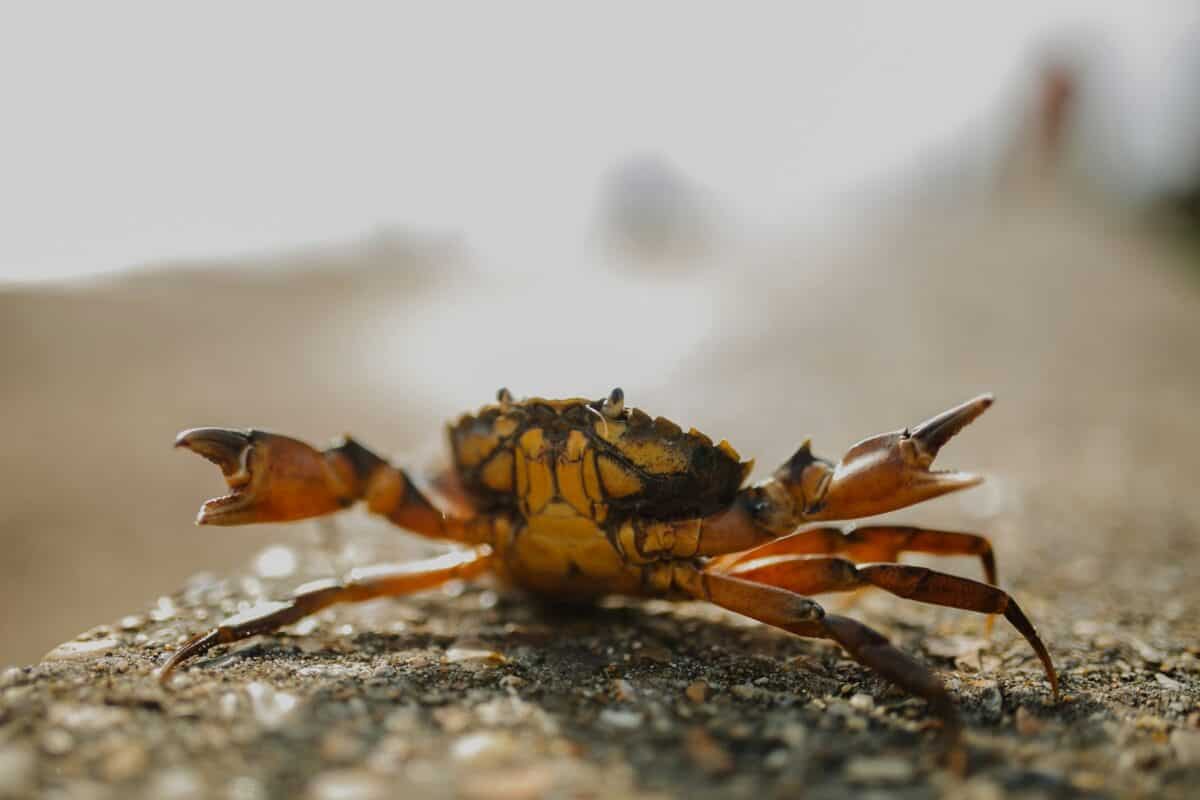
Lobsters aren’t the only seafood that undergoes a dramatic color transformation during cooking. Crabs, shrimp, and crayfish all share this characteristic color change, shifting from their natural state to various shades of orange-red when cooked. The mechanism is identical: all these crustaceans contain astaxanthin bound to proteins in their shells. Some crab species, like the blue crab (Callinectes sapidus), have a beautiful blue-green shell that turns bright orange-red after cooking. Shrimp undergo perhaps the most visible transformation, changing from a translucent gray with green or brown patterns to a vibrant pink-orange when cooked. The consistency of this reaction across different crustacean species demonstrates that this protein-pigment complex and its response to heat is an evolutionary characteristic shared across the crustacean family, likely dating back to their common ancestors millions of years ago.
Cultural Significance of the Red Lobster
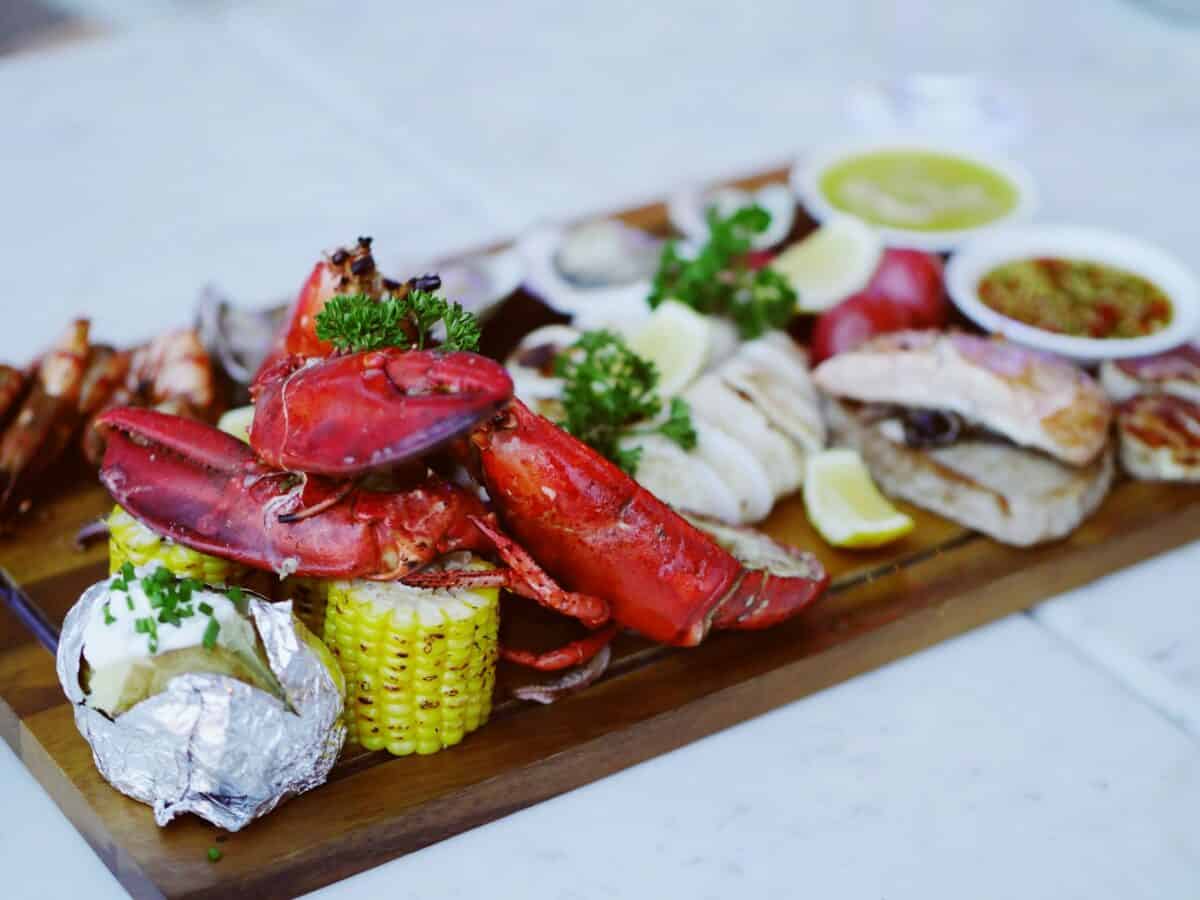
The iconic red lobster has embedded itself deeply in culinary culture and broader society. Its distinctive appearance has made it a symbol of luxury dining and coastal cuisine worldwide. The red lobster image appears in countless restaurant logos, seafood market branding, and coastal art. Perhaps most famously, the Red Lobster restaurant chain has capitalized on this association, becoming one of the largest seafood restaurant companies in the world. The vivid red color signals to diners that the lobster is properly cooked and ready to eat—a visual cue that has become deeply ingrained in our food culture. Beyond restaurants, the red lobster appears in maritime art, coastal decor, and as a symbol in regions where lobster fishing forms an important part of the local economy and heritage, such as Maine in the United States and parts of Canada’s Maritime Provinces. The transformation from humble blue-green creature to bright red delicacy represents a kind of culinary alchemy that continues to captivate our imagination.
Common Misconceptions About Lobster Color
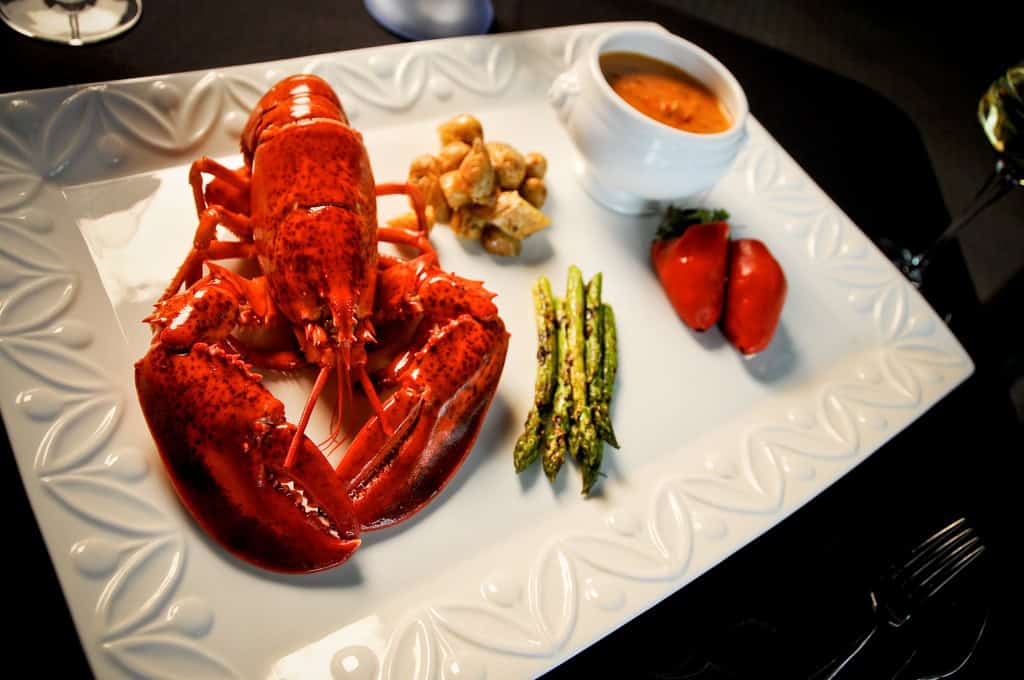
Several misconceptions persist about lobster coloration despite scientific understanding of the process. One common myth is that lobsters turn red because they’re screaming or in pain during cooking. In reality, lobsters lack vocal cords and cannot scream; the sound sometimes heard during cooking is steam escaping from their shells. The color change is purely a chemical reaction unrelated to the lobster’s sensory experience. Another misconception is that the intensity of the red color indicates freshness or quality. While a bright red shell does confirm proper cooking, the exact shade of red depends more on the lobster’s original pigmentation and diet than its freshness. Some people incorrectly believe that different cooking methods produce different colors, but whether boiled, steamed, or grilled, the end result is the same red hue—though the cooking method can affect how quickly and evenly the transformation occurs. Finally, contrary to popular belief, lobsters don’t “bleed blue blood” that turns red when exposed to oxygen; their blood is actually colorless and becomes cloudy when exposed to air, while their color change is entirely related to shell pigmentation.
The Lobster’s Evolutionary Advantage
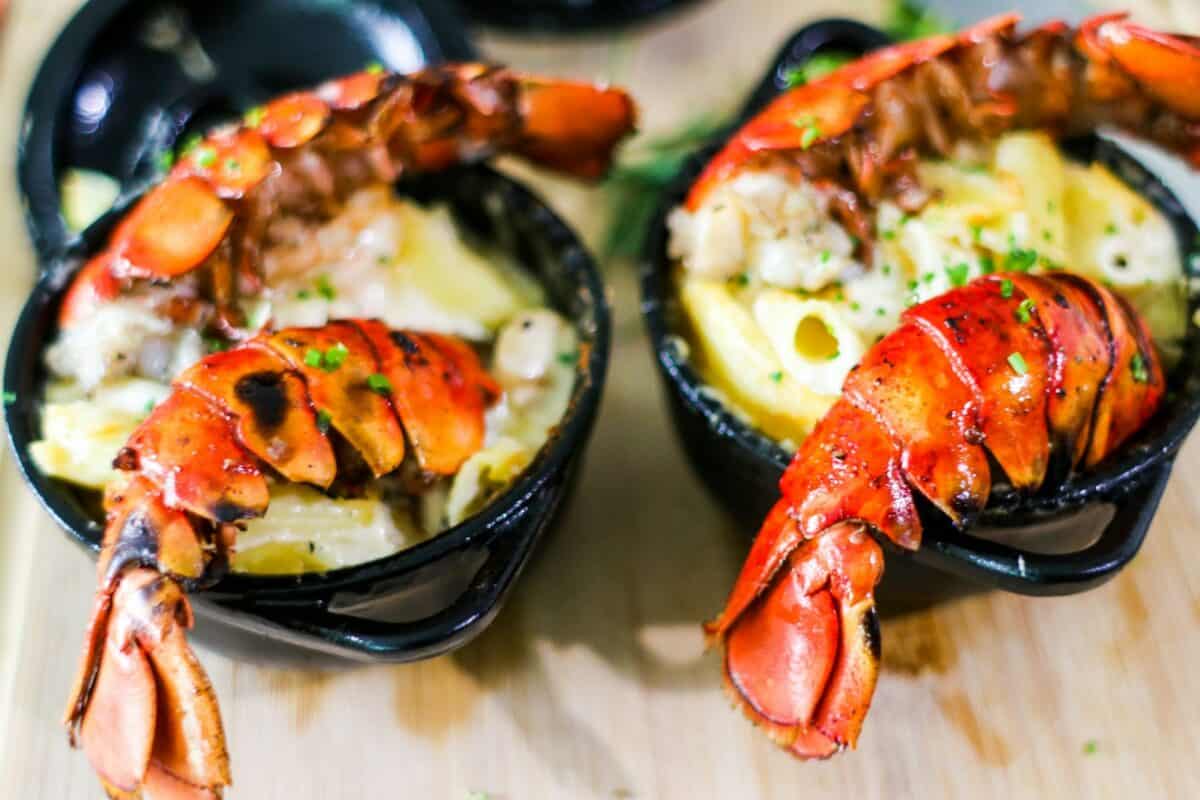
The complex pigmentation system that gives lobsters their color-changing properties likely evolved as a survival advantage. The blue-green coloration of live lobsters provides excellent camouflage in their natural habitat, helping them blend with rocky ocean floors, seaweed, and shadowy underwater environments. This camouflage is crucial for these relatively slow-moving creatures that would otherwise be vulnerable to predators. The astaxanthin in their shells also offers protection against UV radiation in shallow waters and serves as an antioxidant that helps maintain shell health. Interestingly, the protein-pigment complex that enables this camouflage evolved independently of the fact that it would change color when heated—a characteristic that had no evolutionary advantage since lobsters in nature would never encounter the high temperatures needed for the transformation. This color-changing property is essentially a side effect of the chemical structure that evolved for camouflage purposes, making it a fascinating example of how biological adaptations can have unexpected properties outside their natural context.
How Different Cooking Methods Affect the Red Color

While all cooking methods ultimately transform lobsters to red, the process can vary slightly depending on how they’re prepared. Boiling is the fastest method, with lobsters turning bright red within minutes as they’re submerged in water at 212°F (100°C). The even heat distribution ensures a uniform color change throughout the shell. Steaming takes slightly longer but is gentler, allowing the shell to gradually transform to red as the steam penetrates, often resulting in a slightly more intense color because less pigment leaches into the cooking water. Grilling creates a more uneven color change, with areas closest to the heat source turning red first, sometimes creating interesting patterns before the entire shell transforms. Baking follows a similar pattern to grilling, with a gradual color change that spreads across the shell. Regardless of the method, the final color is determined by the amount of astaxanthin in the shell, which can vary slightly based on the lobster’s diet and age. Some chefs prefer certain cooking methods not for the color effect but because they believe different techniques yield better flavor and texture in the meat.
Can You Predict How Red a Lobster Will Become?
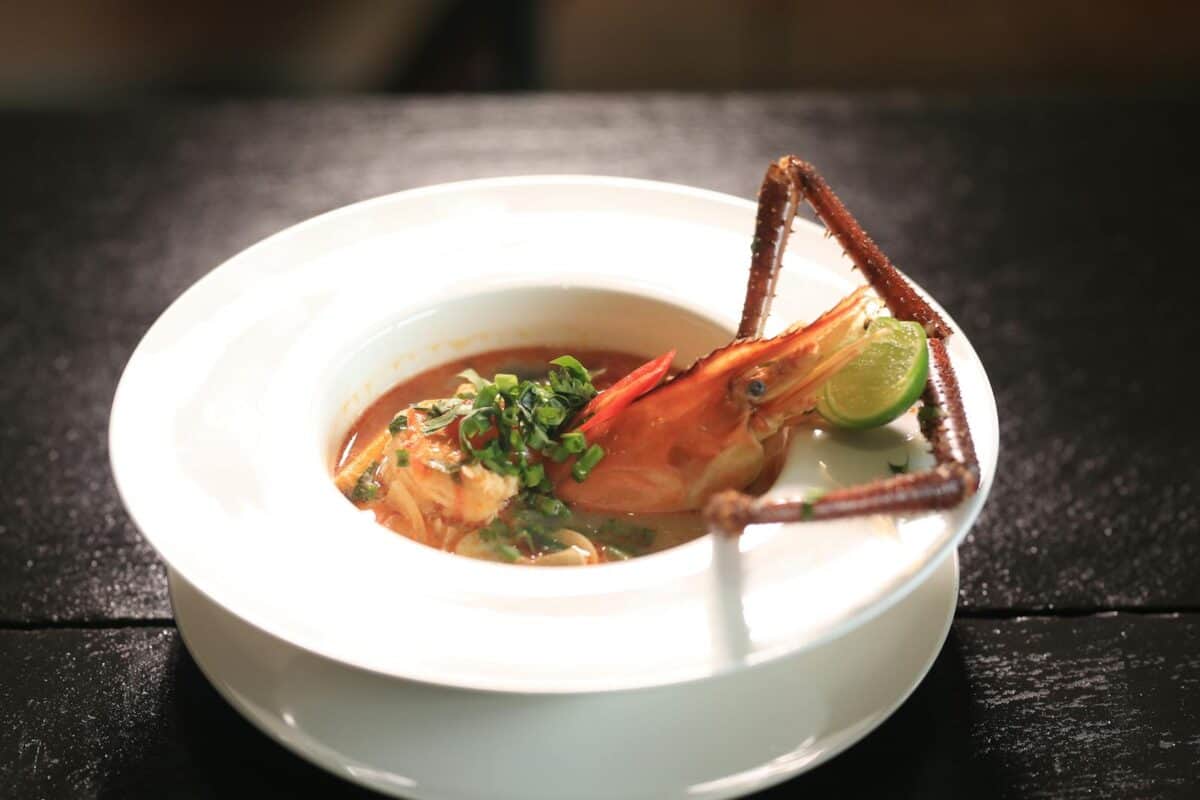
While all lobsters turn red when cooked, the exact shade and intensity can vary based on several factors. The lobster’s diet plays a significant role in determining how vibrant the final red color will be. Lobsters with diets rich in astaxanthin-containing foods like algae, shrimp, and certain fish will develop more intense red coloration when cooked. The age of the lobster also matters; older lobsters that have accumulated more pigments over time often display deeper red hues after cooking. The lobster’s original coloration provides some clues too—unusually colored specimens like blue lobsters often produce particularly vibrant reds when cooked due to their unique pigment distribution. Environmental factors during the lobster’s life, such as water temperature and habitat, can influence pigment deposition in the shell. Even the lobster’s molting cycle affects color intensity, as newly molted lobsters with softer shells typically have less concentrated pigmentation. While these variables make it difficult to predict the exact shade a specific lobster will become, one thing remains certain: every lobster will undergo the blue-to-red transformation when it reaches cooking temperature.
The Science and Wonder of Lobster Coloration
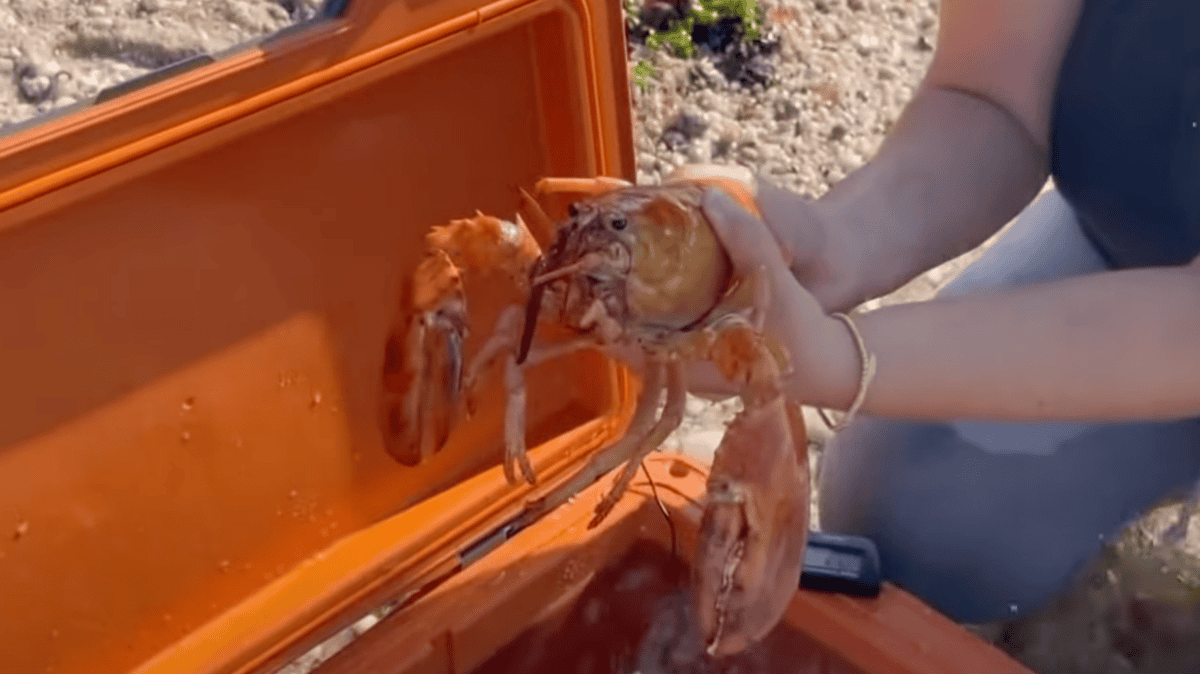
The transformation of lobsters from blue-green to bright red represents one of nature’s most fascinating intersections with human culinary practices. This color change, driven by the release of astaxanthin from protein bonds during heating, demonstrates how molecular structures influence our perception of color and how heat can dramatically alter those structures. The process reveals the hidden properties of natural compounds that would otherwise remain concealed in the lobster’s natural environment. Beyond the scientific explanation, there’s something almost magical about watching this transformation occur—a reminder of the wonder that exists in everyday natural phenomena. The next time you observe a lobster turning red in the cooking pot or admire the vibrant color on your plate, you’ll appreciate that you’re witnessing not just a meal being prepared, but a remarkable demonstration of chemistry in action that has captivated human curiosity for generations.
- How Sea Lions Navigate Thousands of Miles Without Maps - August 9, 2025
- The Most Elusive Mountain Lions Roaming the California Wilderness - August 9, 2025
- Bald Eagles Are Now Nesting in the Most Unexpected States - August 9, 2025

